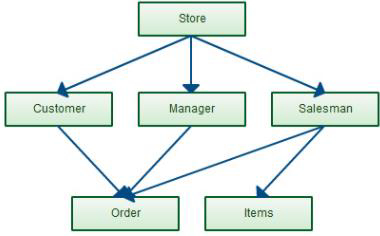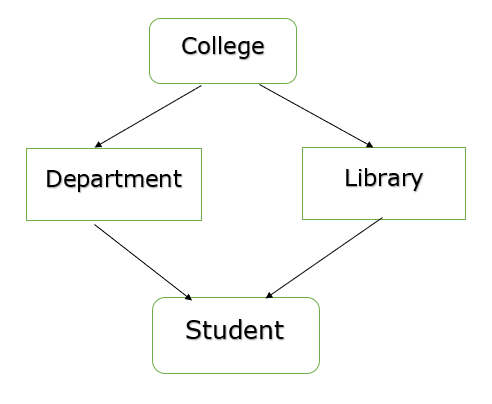
 Data Structure
Data Structure Networking
Networking RDBMS
RDBMS Operating System
Operating System Java
Java MS Excel
MS Excel iOS
iOS HTML
HTML CSS
CSS Android
Android Python
Python C Programming
C Programming C++
C++ C#
C# MongoDB
MongoDB MySQL
MySQL Javascript
Javascript PHP
PHP
- Selected Reading
- UPSC IAS Exams Notes
- Developer's Best Practices
- Questions and Answers
- Effective Resume Writing
- HR Interview Questions
- Computer Glossary
- Who is Who
Explain the Network Model in DBMS?
The network model was created to represent complex data relationships more effectively when compared to hierarchical models, to improve database performance and standards.
It has entities which are organized in a graphical representation and some entities are accessed through several paths. A User perceives the network model as a collection of records in 1:M relationships.
Given below is the pictorial representation of the network model in DBMS −

Features
The features of a Network Model are as follows −
Ability to Merge Relationships − In this model, because of more relationships the data is more related. It has an ability to manage one-to-one relationships as well as many-to-many relationships.
Many paths − There can be more than one path to the same record because of more relationships. It makes data access fast and simple.
Circular Linked List − The operations in this model are done with the help of the circular linked list. The current position is maintained with the help of a program and navigates through the records based on relationships.
Advantages
The advantages of network model are as follows:
Network models represent complex data relationships better than the hierarchical models.
It handles so many relationship types.
Data access is more flexible than hierarchical models.
Improved database performance.
It includes Data Definition Language (DDL) and Data Manipulation Language (DML) commands.
Disadvantages
The disadvantages of network model are as follows:
Database contains a complex array of pointers.
System complexity limits efficiency.
Structural changes require changes in all application programs.
Navigation systems yield complex implementation and management.
Keep heavy pressure on programmers due to the complex structure.
Any change like updating, deletion, insertion is very complex.
Let’s have a look on another example on network model, as shown below −


